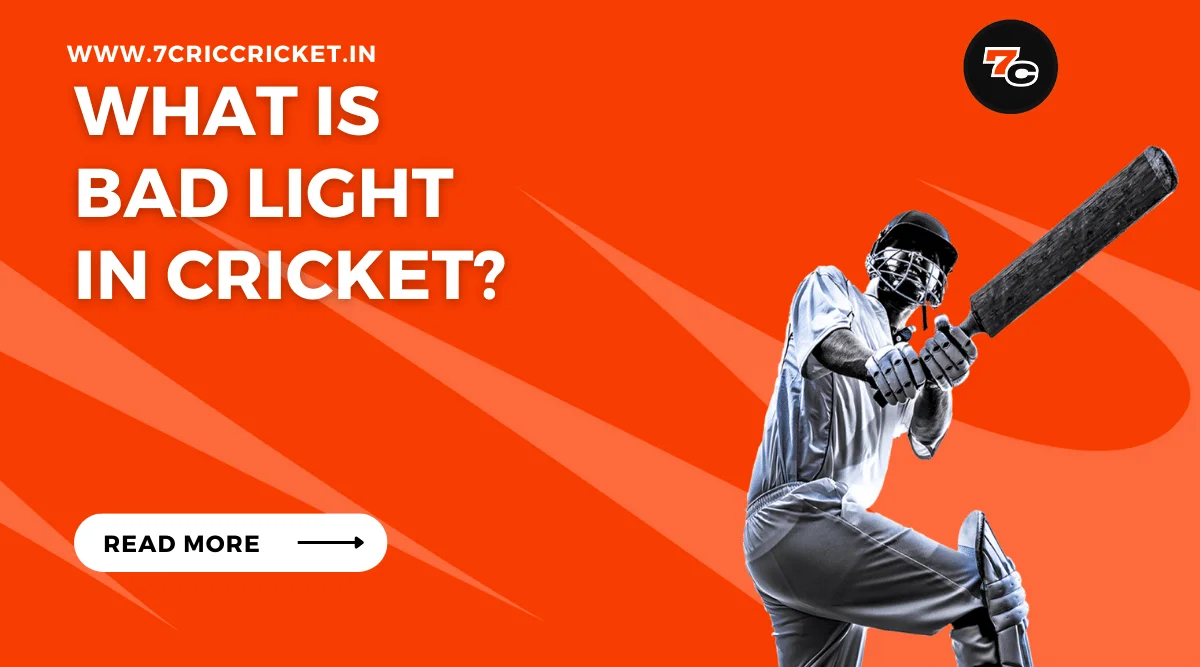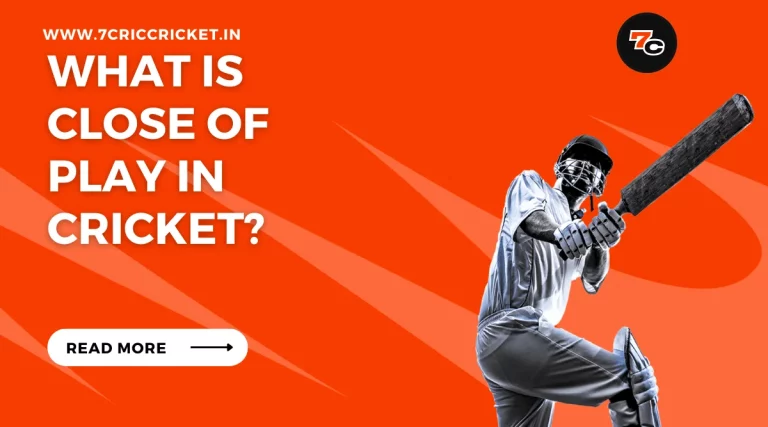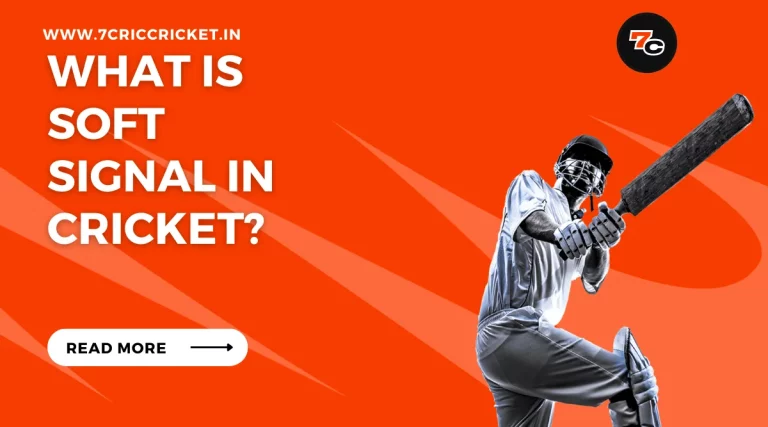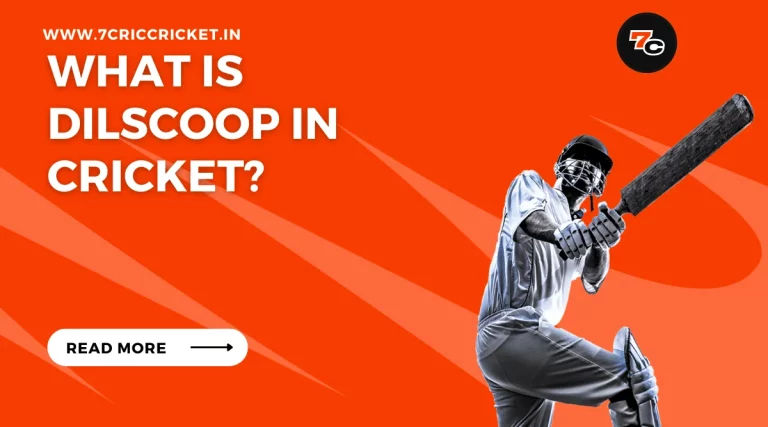What Is Bad Light in Cricket?
In the game of cricket, bad light refers to the conditions where visibility becomes significantly reduced, impacting the players’ ability to continue the game.
This phenomenon can occur due to various factors such as natural light, weather conditions, or insufficient artificial lighting.
200% Welcome Bonus | SPRIBE
200% Welcome Bonus | SPRIBE
- Easy Sign-Up and Deposits
- Win 1000x Bet Amount!
- Available in four different Indian languages
The umpires play a crucial role in assessing when the light becomes too poor for safe play, considering the welfare of the players.
Understanding the implications of bad light and implementing strategies to manage such situations is essential for a smooth cricket match.
Summary & Key Takeaways
ShowThe Definition of Bad Light
What criteria are used to determine bad light in cricket? The determination of bad light in cricket is based on two main factors: safety concerns and the impact on player performance.
Safety concerns are of utmost importance in any sport, and cricket is no exception. When visibility becomes significantly reduced due to poor light conditions, it can lead to potential dangers on the field.
Players may struggle to see the ball clearly, increasing the risk of injury from misjudged shots or collisions. Additionally, fielders may find it difficult to track the ball and make accurate throws, further compromising safety.
Furthermore, bad light can also have a significant impact on player performance. Reduced visibility can hamper a batsman’s ability to judge the line and length of the ball, affecting their timing and shot selection.
Similarly, bowlers may struggle to maintain their accuracy and control when they cannot clearly see the target. This can lead to an unfair advantage for either the batsman or the bowler, depending on the situation.
Considering these factors, umpires are responsible for making a subjective decision on whether the light is suitable for play.
They take into account the safety of the players and the fairness of the game, weighing these concerns against the desire to continue play.
Ultimately, the decision to suspend or continue a match due to these condition lies in the hands of the umpires.
Factors Affecting Bad Light Conditions
Factors that can affect bad light conditions in cricket include atmospheric conditions, time of day, and the condition of the playing surface.
These factors play a crucial role in the visibility and overall playing conditions during a cricket match. Atmospheric conditions, such as fog, haze, or smog, can significantly impact visibility on the field.
These conditions can cause the ball to become difficult to see, making it challenging for both batsmen and fielders. Additionally, rain or drizzle can further worsen visibility, making it unsafe for players to continue the game.
The time of day also plays a crucial role in bad conditions. Matches scheduled during dusk or dawn are more likely to be affected by bad light as the natural light is not sufficient to provide optimal visibility.
The angle of the sun and shadows cast by buildings or other structures can further worsen the playing conditions.
The condition of the playing surface, particularly the outfield, can also affect bad light conditions.
If the outfield is wet or has poor drainage, it can lead to water accumulation, causing a glare on the field. This glare can make it difficult for players to spot the ball effectively.
The impact is significant. Reduced visibility can affect a batsman’s ability to judge the trajectory and speed of the ball, leading to misjudgment and potential dismissals.
Fielders may struggle to track the ball accurately, resulting in dropped catches or missed opportunities.
Furthermore, bad light conditions have a significant effect on match scheduling. Delays and interruptions due to these condition can disrupt the overall flow of the game and impact the match duration.
Cricket authorities and match officials must carefully consider these factors when scheduling matches to minimize the impact of bad light conditions.
Umpire’s Role in Assessing Bad Light
Assessing bad light conditions in cricket is the umpire’s responsibility. The umpire plays a crucial role in determining whether the light is suitable for play to continue.
This decision is not taken lightly, as it directly impacts player safety and the fairness of the game. The umpire’s decision regarding bad light is based on several factors, including:
- Light meters: Umpires use specialized light meters to measure the available light on the field. These devices provide objective readings that help in making an informed decision.
- Threshold levels: Different cricketing authorities have set specific threshold levels of light that must be met for play to continue. The umpire compares the readings from the light meter with these threshold levels to assess the conditions.
- Player safety: The primary concern for the umpire is the safety of the players. If the light deteriorates to a point where it becomes difficult for players to see the ball clearly, the umpire has a duty to intervene and call for a break or even abandon the game if necessary.
- Health risks: Poor visibility can increase the risk of injuries, as players may struggle to judge the speed and trajectory of the ball. The umpire must prioritize the well-being of the players and ensure that the game is played under safe conditions.
Consequences of Bad Light on the Game
The consequences of bad light in cricket can significantly impact the flow and outcome of the game. One of the most notable effects is the impact on player performance.
When visibility is reduced due to poor light conditions, players may struggle to see the ball clearly, making it difficult to judge its trajectory, speed, and spin.
This can result in misjudgments, mistimed shots, and a higher likelihood of getting dismissed.
Batsmen may find it challenging to pick up the line and length of the deliveries, while fielders may struggle to track the ball in the air or on the ground.
In addition to the impact on player performance, bad light can also disrupt the match schedule. If the light deteriorates to a point where it becomes unsafe or unfair for the players, the umpires may decide to suspend the game.
This can lead to delays or even the abandonment of a match, causing inconvenience to the teams, spectators, and broadcasters.
Furthermore, rescheduling matches can be a logistical challenge, especially in tightly packed cricket schedules.
Strategies to Deal With Bad Light Situations
To address bad light situations in cricket, teams and umpires often resort to employing floodlights to ensure adequate visibility for players and maintain the integrity of the game.
However, there are several strategies teams can employ to deal with bad light situations, considering the challenges they may face. Strategies to deal with these situations include:
- Offering light meters: To ensure fairness, teams can offer light meters to umpires and opposing teams. This allows everyone involved to objectively assess the light conditions and make informed decisions regarding play.
- Increasing the number of floodlights: Adding more floodlights around the ground can help enhance visibility and overcome the challenges posed by bad light. This strategy is often used in stadiums where natural lighting may be insufficient.
Challenges teams face when dealing with bad light situations include:
- Balancing safety and fairness: Ensuring the safety of players is of utmost importance, but it should not compromise the fairness of the game. Striking the right balance between the two can be challenging.
- Managing interruptions: Bad light can cause frequent interruptions in the game, affecting the momentum and concentration of players. Teams need to strategize on how to maintain focus and minimize the impact of these interruptions.
Final Thought of the Terms “Bad Light”
In conclusion, bad light in cricket refers to the conditions where visibility is significantly reduced due to insufficient natural or artificial lighting. Factors such as weather, time of the day, and ground conditions can affect the level of these condition.
Umpires play a crucial role in assessing the suitability of playing conditions and deciding whether to continue or suspend the game. They consider factors such as the brightness of the light, the visibility of the ball, and the safety of the players. If the umpires determine that the light is too poor for safe play, they may suspend the game or offer the players the option to continue.
Bad light can have various consequences, including delays, early finishes, or even abandonment of matches. Delays can occur when the umpires decide to suspend the game temporarily until the light improves. If the light does not improve within a reasonable time, the match may be called off for the day, resulting in an early finish. In extreme cases, matches can be abandoned altogether if sufficient playing time cannot be guaranteed.
200% Welcome Bonus | SPRIBE
200% Welcome Bonus | SPRIBE
- Fastest Indian Rupees Withdrawals
- Win 1000x Bet Amount!
- 450% Bonus up to ₹1,000,000
Teams employ different strategies to cope with bad light situations. They may adjust their playing schedules to take advantage of the better light during certain times of the day. Additionally, some cricket grounds have floodlights installed, allowing games to be played under artificial lighting.
Overall, bad light in cricket is a challenging aspect of the game that requires careful assessment and decision-making by the umpires. It can significantly impact the course and outcome of a match, and teams must adapt and strategize accordingly.
Frequently Asked Questions (FAQs)
How Does Bad Light Affect the Visibility of the Cricket Ball for the Players?
Bad light in cricket significantly affects the visibility of the cricket ball for players, resulting in a negative impact on their ability to track the ball’s movement accurately. This, in turn, affects gameplay and can lead to reduced performance and potential safety concerns.
Are There Any Specific Rules or Regulations Regarding the Minimum Light Conditions Required to Continue a Cricket Match?
Minimum light conditions in cricket are governed by rules and regulations set by the International Cricket Council (ICC). These regulations ensure that matches can only continue if the light is deemed sufficient for players to safely and effectively participate in the game.
Can Bad Light Conditions Lead to an Increase in Injuries for the Players?
Bad light conditions in cricket can have a significant impact on player safety, potentially leading to an increase in injuries. The reduced visibility can make it difficult for players to judge the trajectory of the ball, increasing the risk of collisions and accidents on the field.
What Are the Potential Consequences for a Team if a Match Is Abandoned Due to Bad Light?
The potential consequences of a match being abandoned due to bad light can have a significant impact on a team’s performance. It disrupts the momentum, affects player morale, and can result in missed opportunities for achieving a favorable outcome.
Are There Any Technologies or Equipment Available to Improve Visibility in Bad Light Conditions?
Technological advancements have greatly improved visibility in bad light conditions, reducing the impact on player performance. These advancements include floodlight systems, LED stumps and bails, and enhanced sight screens, ensuring fair and safe play in all lighting conditions.








